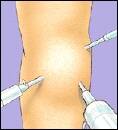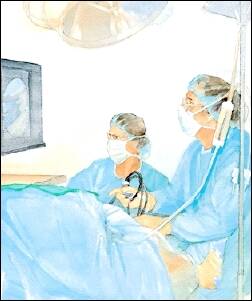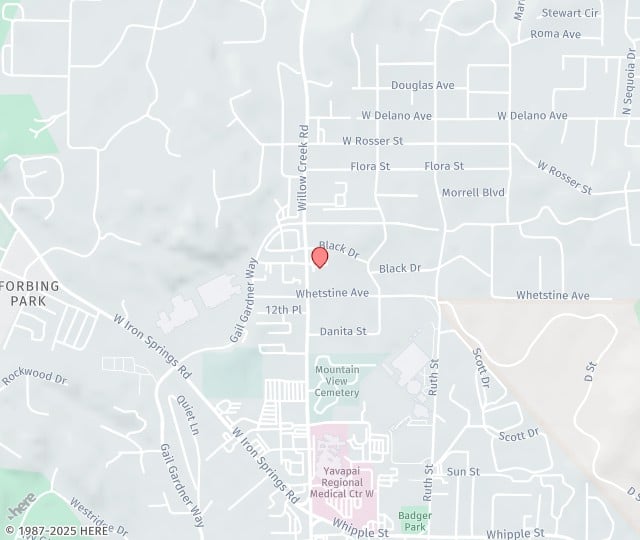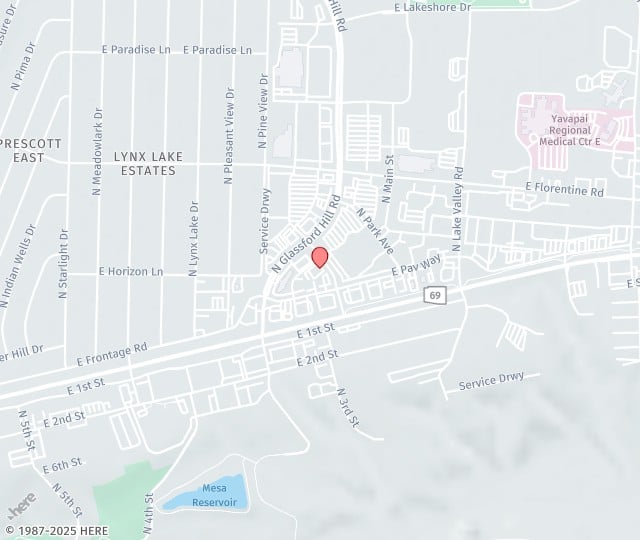Joint Health
Joint Health
Welcome to our health education library. The information shared below is provided to you as an educational and informational source only. It is not intended to replace a medical examination, consultation, or medical advice given to you by a physician or medical professional.
Knee problems can arise from various sources, such as structural weaknesses, overuse, sudden injuries, or aging. Regardless of the cause, many knee issues can be diagnosed and treated with a minimally invasive procedure called arthroscopy. This technique allows our experienced doctors at Granite Orthopaedics to see inside knee, hip, and shoulder joints using only small incisions. Find the solution to your knee pain at our clinic in Prescott Valley, Arizona.



What Is Arthroscopy?
At the heart of arthroscopy is the arthroscope, a thin, lighted instrument equipped with a camera. This device is inserted through small incisions, or portals, in your knee. The camera projects clear, live video images onto a monitor, giving your doctor a detailed view of the inside of your knee joint. This visual aid helps in accurately diagnosing and treating the problem.
During the procedure, sterile fluid is introduced into your knee to expand the joint, making it easier for your doctor to see and work. Special surgical instruments can also be inserted through the portals to perform necessary treatments, such as repairing or removing damaged tissue. This approach usually means less pain and a quicker recovery compared to traditional open surgery.
What to Expect From Your Arthroscopy Procedure
Because arthroscopy uses much smaller incisions, recovery is often shorter and less painful than recovery after open surgery. Here is what to expect before, during, and after your knee surgery:
Before Surgery
- We may require you to undergo lab tests to ensure you are ready for surgery.
- We will ask you not to eat or drink anything for 10 hours before your procedure.
- Arrange for someone to drive you home after the surgery.
During Surgery
- We will administer an anesthetic to make you comfortable. This could be general anesthesia (making you sleep), regional anesthesia (numbing you from the waist down), or local anesthesia (just numbing your knee).
- The doctor will make a few small incisions in your knee.
- They will insert sterile fluid through one of the portals to expand your knee joint, providing better visibility and space to work.
- They’ll then insert the arthroscope, a thin, lighted instrument with a camera, through one of the incisions. The camera sends live video images to a monitor, allowing us to see the inside of your knee clearly.
- The doctor will assess the type and extent of any damage.
- Whenever possible, we will treat the issue during the arthroscopy using specialized surgical instruments such as shavers or thermal devices.
After Surgery
Because arthroscopy uses smaller incisions, recovery is typically shorter and less painful compared to open surgery. We will provide detailed post-operative instructions to support your recovery.
Benefits of Knee Arthroscopy
Knee arthroscopy offers several advantages as a minimally invasive surgery:
- Smaller Incisions: Less tissue damage compared to traditional open knee surgery.
- Reduced Pain: Less post-operative pain due to smaller incisions.
- Quicker Recovery: Shorter recovery times allow a faster return to normal activities.
- Lower Risk of Infection: Smaller incisions reduce infection risk.
- Improved Accuracy: A clearer view of the knee joint for accurate diagnosis and treatment.
- Outpatient Procedure: Most procedures allow patients to go home the same day.
Why Choose Granite Orthopaedics
Patients choose Granite Orthopaedics for our comprehensive approach to joint health, which includes specialized treatments such as arthroscopic knee surgery, shoulder surgery, and total joint replacements.
We pride ourselves on our extensive training and experience. Our orthopaedic surgeons utilize the latest techniques and equipment to ensure the best possible outcomes for our patients, resulting in less scarring, faster recovery times, and a quicker return to daily activities.
Our commitment to excellence and innovation has made us a trusted provider in the community, serving Prescott, Prescott Valley, Chino Valley, Williamson, Dewey-Humboldt, and nearby areas.
Frequently asked questions
Knee arthroscopy can diagnose and treat a variety of conditions, including meniscus tears, ACL tears, cartilage tears, patellar tendonitis, and loose bodies (bone or cartilage) in the joint. It is also useful for diagnosing the cause of unexplained knee pain and swelling.
The knee arthroscopy success rate is generally high, with many patients experiencing significant improvement in knee function and a reduction in pain. The success of the procedure largely depends on the specific condition being treated.
Overall, knee arthroscopy is considered a safe and effective procedure for diagnosing and treating various knee conditions.
You can expect some swelling and discomfort, which can be managed with pain medication and ice packs. Physical therapy exercises will be recommended to help restore mobility and strength. Most patients can walk with crutches shortly after the procedure, but full recovery typically takes about six to eight weeks. The exact recovery time depends on your unique situation and the condition we are treating.
The timeline for returning to normal activities following knee arthroscopy varies depending on the specific condition treated and your overall health. Generally, you can return to light activities within a few days to a week. More strenuous activities, such as sports, may require several weeks to months of rehabilitation. Your doctor will provide personalized guidance based on your progress.
While knee arthroscopy is generally safe, it carries some risks. Common issues include swelling, stiffness, minor bleeding, and the potential for blood clots, which may require blood-thinning medications. Infection, though rare, can occur and needs immediate medical attention if symptoms like redness, warmth, increased pain, or fever develop. Some knee problems may persist, or new issues may arise post-surgery.
Overcoming Knee Pain With Advanced Arthroscopy Techniques
At Granite Orthopaedics, we take pride in having some of the best knee arthroscopy surgeons in Prescott Valley, Arizona. Our experienced team is dedicated to providing minimally invasive solutions to help you overcome knee pain and improve your quality of life.
Call us at +1 (928) 777-9950 to learn more about how knee arthroscopy can benefit you.

